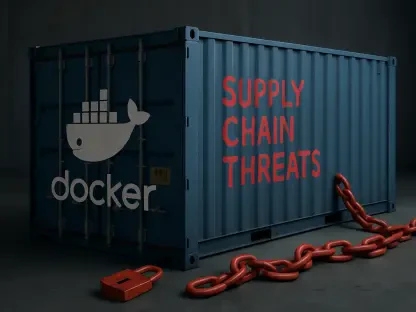Listen to the Article
The race to AI readiness is exposing cracks in cloud strategy. Everyone’s moving fast. Your peers are modernizing infrastructure, scaling AI pilots, and trying to get ahead of rising costs.
But for many, the cloud—the very foundation meant to support it all—is failing. It has become a complex, fragmented ecosystem that’s costly to run and difficult to manage.
And at the heart of the issue? A lack of governance.
This article unpacks why cloud governance is becoming a quiet differentiator in enterprise strategy and how those getting it right are accelerating the time to innovation.
Why cloud chaos is more common than you think
Cloud migration was supposed to simplify operations, drive agility, and reduce costs. And to some extent, it did. But for many, that early win has been followed by diminishing returns.
When governance falls by the wayside, cloud environments start to sprawl. Teams spin up workloads without alignment, resources get overprovisioned and forgotten, and security standards vary by project or platform—bringing the costs up.
According to IDC, companies lacking a cohesive governance approach overspend by up to 40%, mostly because of unmanaged sprawl, duplicate services, and poor cross-functional visibility.
The cloud still works. But without structure, it can’t support the outcomes you’re aiming for.
So what exactly is cloud governance—and why now?
Cloud governance at its heart is the strategic backbone that brings order to the chaos. It’s a framework that helps enterprises manage costs, security, and performance at scale, while staying aligned to business goals.
Done right, it connects policies, controls, and operational best practices across every part of the organization—from finance to engineering to compliance. And right now, it’s becoming business-critical.
As organizations train and deploy AI workloads, cloud usage spikes, especially in compute-intensive environments. Without governance, these workloads can introduce massive cost volatility, compliance risks, and architectural inefficiencies.
That’s why your cloud-forward peers are putting governance back on the strategic agenda.
What happens when there’s no governance?
Let’s break down what poor or non-existent governance actually costs your business:
Cloud sprawl becomes the norm. Without oversight, teams deploy resources across multiple platforms, creating silos and reducing visibility.
Costs spiral fast. There is no tagging, automated shutdowns, or accountability. Gartner estimates that up to 70% of cloud spending is wasted, most of it preventable through policy-based controls.
Security gaps and compliance failures. Without unified access management and enforcement of security baselines, cloud environments become patchworks of risk. This results in an exposure to data breaches, audit failures, and regulatory non-compliance, which is especially dangerous in the finance, healthcare, and government sectors.
Delayed delivery and innovation bottlenecks. Ironically, total freedom creates friction. Teams often duplicate work or struggle to integrate across systems because there’s no standardization. That slows down product delivery, damages internal trust, and derails innovation pipelines.
The bottom line: governance isn’t bureaucracy, but the foundation for operational excellence in the cloud.
What your peers are doing differently
Think of it [governance] as an ongoing process where top performers have one thing in common: treating it as a cross-functional business priority.
Here’s what they do differently:
They build a cloud operating model first. That means defining roles, escalation paths, and ownership across functions before layering in tools.
They automate enforcement. Manual tracking doesn’t scale. So they use policy-as-code, cost alerts, and provisioning templates to embed governance from the ground up.
They integrate FinOps. Finance and IT aren’t operating in silos anymore. Enterprises that successfully control cloud spending adopt FinOps practices, bringing financial accountability to engineering teams. This includes tagging resources, forecasting usage, and setting budget guardrails from the onset.
They align governance with business outcomes. Rather than applying blanket restrictions, your peers tailor governance to strategic goals. That means supporting AI initiatives with optimized graphics processing unit provisioning, enabling rapid development operations pipelines while securing sensitive workloads, and mapping policies to key performance indicators that matter.
They treat cloud governance as continuous change management. Because it isn’t a one-and-done project, cloud providers evolve, and business needs change. Successful companies establish governance review cycles to continuously refine controls, close gaps, and adapt to new risks.
What it looks like in action
A multinational pharmaceutical business transitioning to the cloud exceeded its budget set for three different providers. During the assessment, they observed that a large number of workloads had no tags, so cost visibility and chargebacks were poor. During security reviews, some permissions were found to be configured incorrectly in different environments.
To address these challenges, they introduced a governance framework that included automated tagging, centralized identity management, and FinOps reporting. Over a six-month period, these methods cut monthly cloud costs by 32%. And that wasn’t the only win—governance also helped accelerate AI drug discovery pipelines by improving how workloads were placed and managed.
A key advantage in an AI-powered future? Yes
AI is pushing cloud infrastructure to its limits; training models, running inferences, and storing massive datasets all place immense demand on compute, storage, and security. And as it [artificial intelligence] becomes a core business function, cloud environments will be met with more complexities.
Without strong governance, the costs and risks of scaling AI will outweigh the benefits. But with governance? You will be able to:
Scale AI efficiently by standardizing provisioning and usage patterns across teams.
Align AI investment with outcomes through better visibility and financial discipline
Reduce operational waste by surfacing and shutting down idle or duplicate workloads.
Strengthen your security posture by unifying access policies and audit logs.
In this environment, governance will be your advantage.
To move forward
Don’t make cloud governance an option, because it will show:
Assess your current governance maturity. Identify gaps in cost controls, policy enforcement, and accountability.
Bring finance and engineering together. Adopt FinOps principles to align spend with value.
Automate everything you can—policy-as-code, templates, and real-time alerts make scale possible.
Keep it iterative—your governance framework should evolve with your priorities.
Because the cloud without governance is chaos, and in the race to AI advantage, only those who can control their clouds will win. Will it be you?









